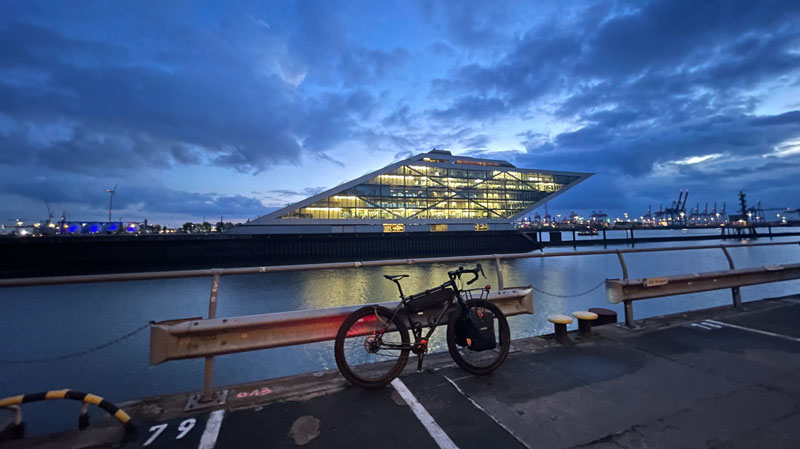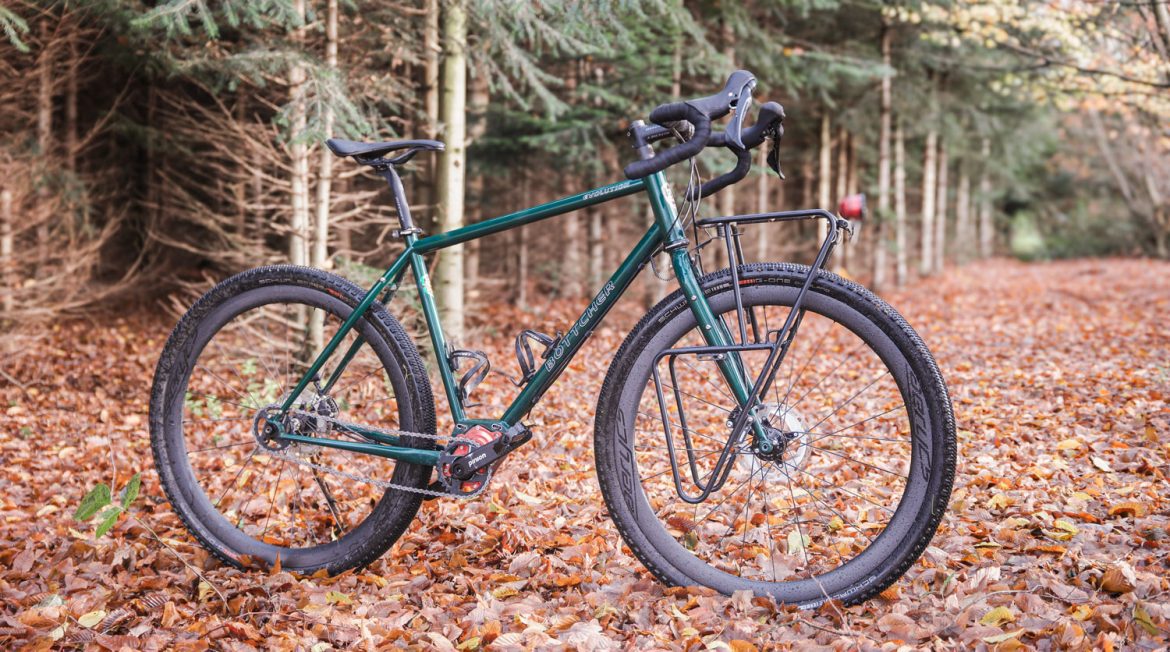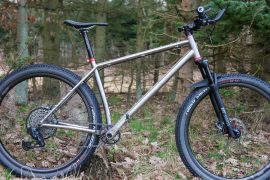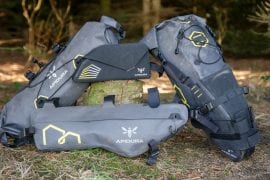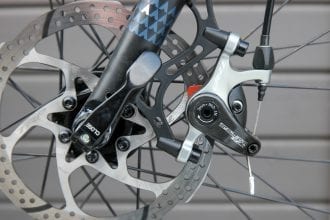Please note: Böttcher provided me with the test bike. Therefore this is an advert.
There is a background to this bike: a few months ago I tested the Evolution gravel bike from the Heide-based manufacturer. Afterwards we stayed in touch and in the summer Böttcher approached me again and asked if I would like to test the new Evolution Pinion. They asked me to have a look at the configurator to see what I liked and design the test bike accordingly.
I was sceptical, because a classic touring bike and then also with Pinion is not really my cup of tea at the moment. The reason is not that I don’t like these bikes, but simply that I don’t use them. I travelled on classic touring bikes for almost 30 years and took many of my most beautiful trips around the world on them. But then I orientated myself more towards Bikepacking and later towards Ultra-Endurance Bikepacking, where I am currently also active.
Testing a touring bike would therefore not really be credible and does not reflect my current interests. I also found it difficult to decide on Pinion. The way I’m currently riding and using a bike, this gearbox isn’t really suitable. But it is definitely interesting on a touring bike. You can read my thoughts and opinion on the Pinion gearbox in the test of the Tout Terrain Outback Xplore. You can also read my article on the efficiency of belts, chains and gears, which takes a scientific view of these topics.
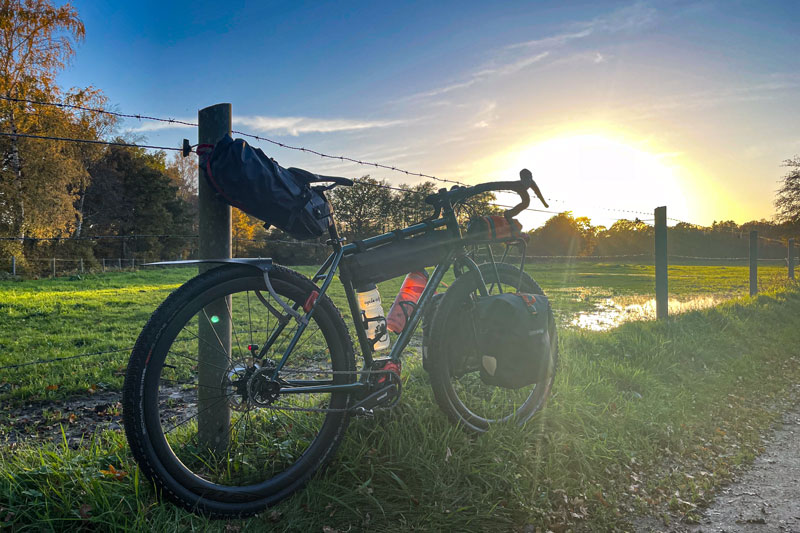
I then declined the test for the time being, but developed an idea in my reasoning, which resulted in the current test bike: the idea of an Overlander touring bike. I had previously read an article about the British colonial road from London to Singapore, on which adventurers also travelled with their old Landrovers.
And I understood the Evolution more as an actual evolution, as a move away from tradition and towards something new. The Evolution should not take a “step backwards” and just be a copy of the classic touring bike, but rather adopt the fresh ideas of the gravel bike and turn it into a new type of touring bike.
For me, the gravel bike is essentially a pretty good touring bike that is both sporty and at the same time very good on unpaved roads. What’s more, it not only offers classic luggage transport using a carrier, but also bikepacking variants on the frame. And I saw this irresistible combination in the Evolution Pinion.
To illustrate this, I used AI to create pictures of how I see it in terms of style:
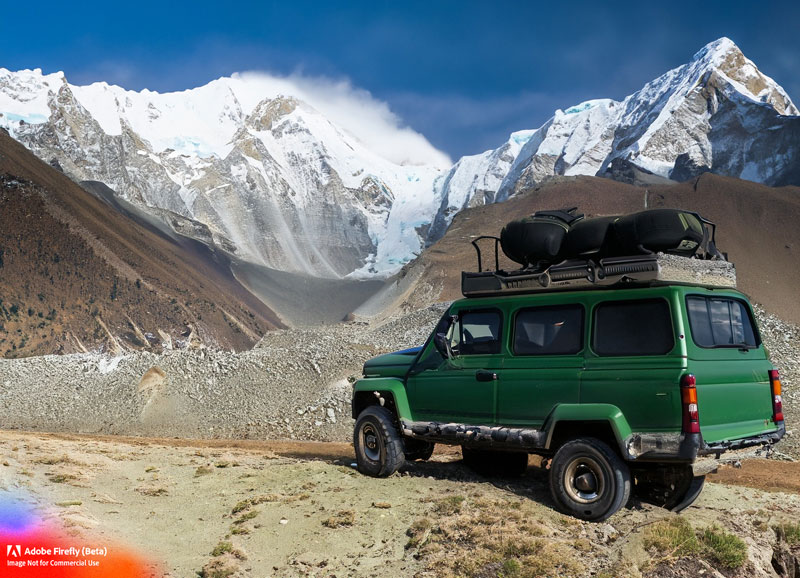
I then used the configurator as much as possible to realise my idea of the Böttcher Evolution Pinion “Overlander”:
- The diamond frame in classic British Racing Green, as a reminiscence of the Land Rover.
- In addition, the Pinion, headset, hub dynamo and light in dark red in a perfect colour combination.
- I actually wanted the fork in black, if not a carbon version (but that wasn’t possible).
- Then the Tubus Grand Expedition front pannier rack at the front and none at all at the rear. This gives the Evolution the Landrover character.
- I had to choose SON Edelux for the lights. But the configurator will soon offer Supernova as well as B&M and SON.
- A chain instead of a belt. It’s a matter of taste, but I always prefer the chain to the belt. (see also my articles linked above).
- The biggest change: instead of a rigid handlebar, a drop bar. This handlebar shape still offers the most grip options and the first touring bikes often or always had this type of handlebar, as they came from the randonneur.
- No mudguards, also to maintain the sporty, gravel bike-inspired look and not to have any more stuff on it. Some of you will be rolling your eyes at this, but I didn’t use to ride one on my touring bike either, then had some permanently installed on my Norwid touring bike, but they quickly broke. And since I started bikepacking, I’ve always ridden without them, or only with the Ass Saver. And if there’s luggage on it, with no mudguards at all.
- The Schwalbe G-One Overland tyres, which I had already been able to try out on the Fargo and which I consider to be ideal touring tyres.
And so I sent my idea to Heide and heard nothing more at first. Then I received an invitation to the Böttcher dealer days in September. I spontaneously offered to give a presentation there about the Silk Rod Mountain Race. And when I arrived and had finished my presentation, to my great surprise, Böttcher presented the Böttcher Evolution Pinion á la Martin.
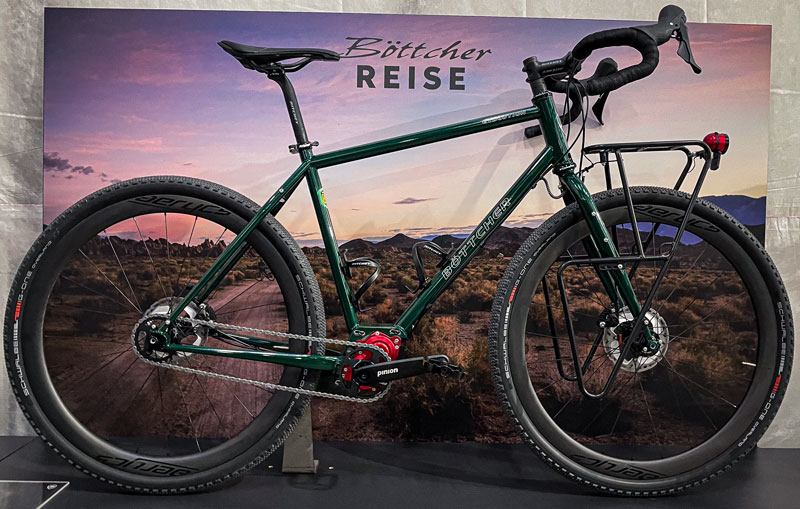
And it was almost exactly as I had imagined and was also equipped with a world first and prototypes. More on that below. Regardless of this, I was of course delighted that someone took what I was saying seriously and then made such a beautiful bike out of it.
But the best thing is: I was also allowed to test the bike.
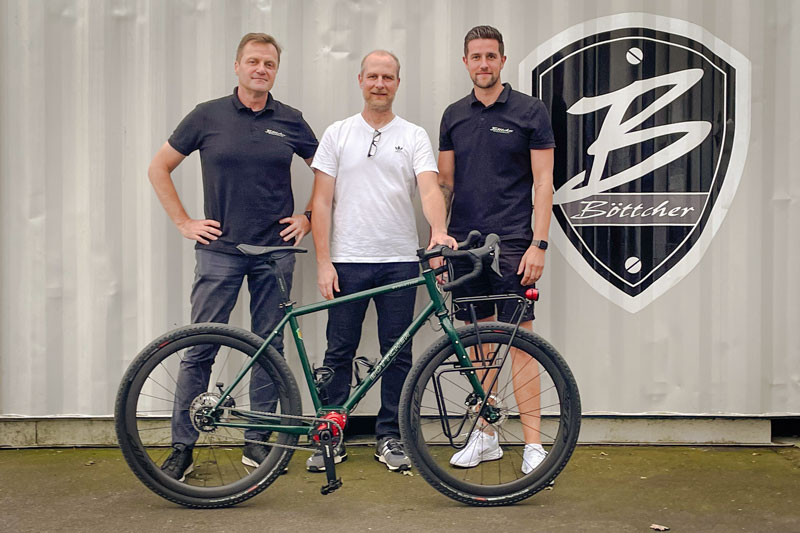
On the road with the Böttcher Evolution Pinion
Table of contents:
- On the road with the Böttcher Evolution Pinion
- Frame, geometry & handling
- The world first: Shimano GRX/Pinion combination
- Wheels & pannier rack
- Light & handlebars
- Conclusion
Frame, geometry & handling
Well, as the bike was more or less a co-development, I can’t talk badly about it in the test report. But that wasn’t even necessary, because I was surprised myself at how well it rode and behaved in the end. I had question marks: firstly because of the Pinion and the associated sluggishness. And secondly, I didn’t know whether the load on the front wheel carrier would have a negative effect on the handling and cause difficulties off-road.
I rode the bike just under 400 kilometres in the test, half of which was loaded. The proportion of off-road was 50-60%, the rest was tarmac/road. On the first few kilometres, I had to get used to the touring bike geometry, which we challenged a little with the drop bar. The frame is a classic Diamant steel frame made from tried and tested Reynolds 853 tubes. The fork is also made from this material.
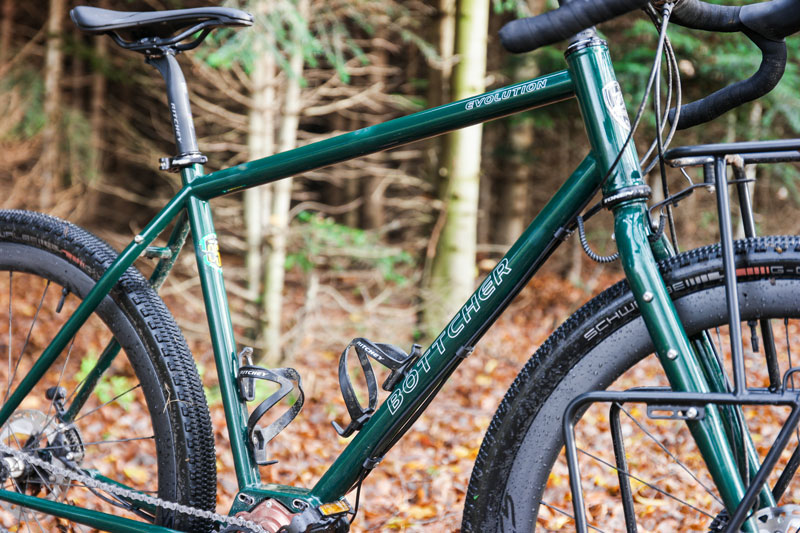
The stack to reach ratio is 1.57, which means a very upright and comfortable riding position. However, we have changed this slightly with the stem and the Ritchey drop bar and made it sportier again. This is not uncomfortable in practice – on the contrary, I still have a lot of control, especially when there is luggage on the front rack. Then the bike handles well, but you have to get used to the fact that you have the weight at the front and it’s a bit lower. Steering is then slightly different.
However, I found this refreshing, as it reminded me of the days when I was a touring cyclist and travelled a lot with a low rider. Then as now, you have to make sure that the weight is balanced when packing, otherwise the front wheel can swing up. But you quickly get used to the somewhat cumbersome steering and can then handle it quite well off-road. However, it is of course a far cry from the agility of a bikepacking bike.
After familiarising myself with the Evolution Pinion at the beginning, I was quite snappy on the road. Of course, you realise that it’s a touring bike and not a gravel bike. I always had to remind myself of that at the beginning. But once you’ve slowed down and adjusted to it, it’s still agile enough in the forest and on tarmac.
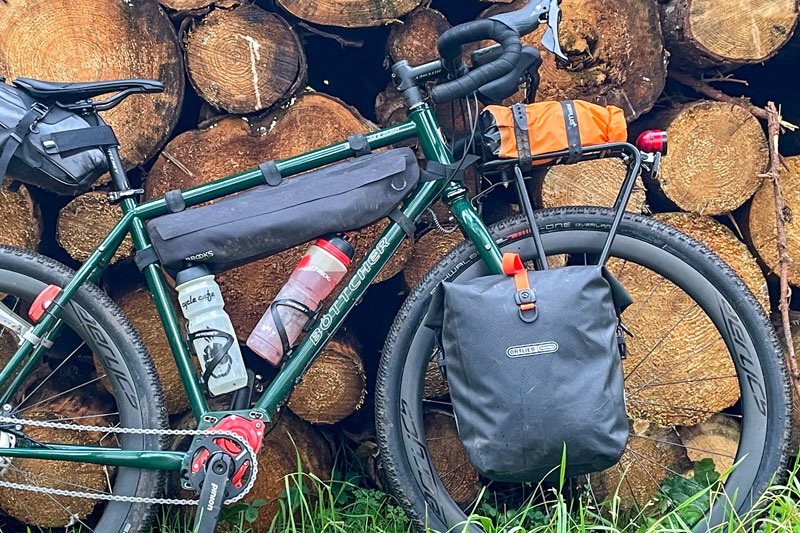
To be honest, my calculation worked out, because I was hoping for a touring bike with which you can also be sporty when loaded, but which also has enough propulsion off-road – despite or even with the Pinion. And that’s where the title of this test report comes from: The return of the touring bike. The Böttcher Evolution Pinion is and remains a touring bike, but the modifications have made it sportier and more suitable for gravel. And it looks better too.
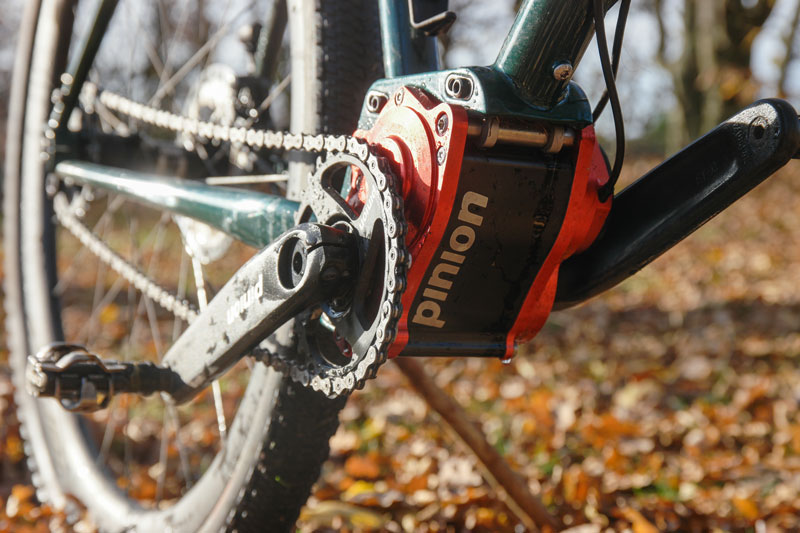
The Pinion bridge is at the centre of the Evolution frame. This is designed so that the chain or belt tension can be adjusted very easily. There is a frame lock at the back of the frame, which has caused some discussion in the past. It was similar to the frame lock that was fitted to my 2018 Bombtrack Beyond and had corresponding problems with fixing the derailleur hanger to the frame.
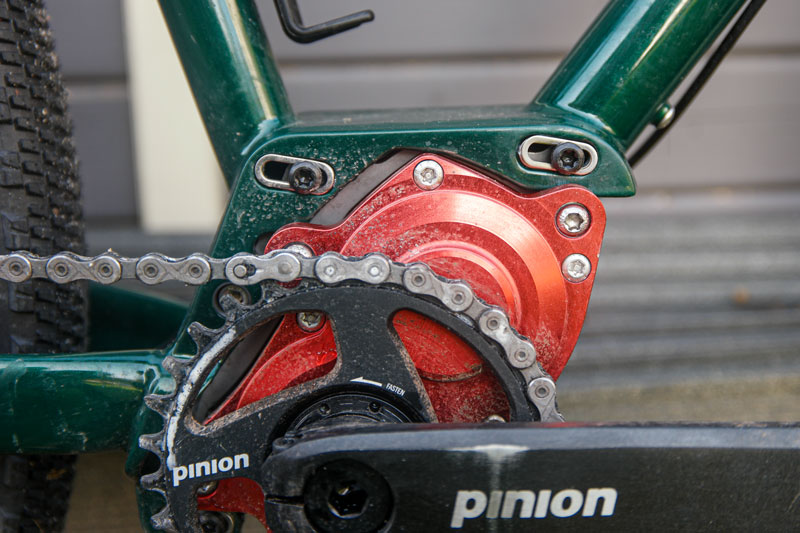
Böttcher naturally looked into these problems and responded. When I asked why the frame lock and the derailleur hanger were attached in this way and how they reacted to the problems, Böttcher replied:
“The derailleur hanger is designed in this way because we want to remain true to our very narrow and traditional design in the rear triangle area. We had this vision from the outset and it has been realised accordingly. We have taken measures to respond to the problem with the derailleur hanger. The current derailleur hanger has nothing to do with the original one. The new derailleur hanger is made of steel, whereas the old one was made of aluminium. For the new dropout, we have developed high-strength bolts that are specially matched to the steel alloy of the dropout and with which the derailleur hanger is attached to the frame. We had no technical information about the old derailleur hanger, neither about the material nor about the bolts. The new dropouts were designed by us and are produced in a CNC manufacturing process in Germany.”
Böttcher
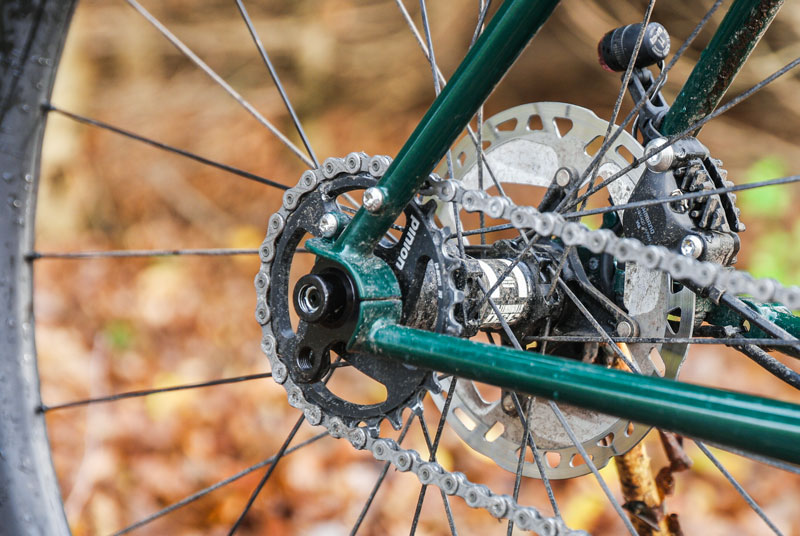
The world first: Shimano GRX/Pinion combination
Anyone familiar with Pinion gears will know that they can be shifted mechanically either via a twist shifter, thumb levers or special solutions such as Tout Terrain Shift:R Road. The latter is already an offer to all those who want to combine a Pinion with a drop bar, but only with mechanical brakes and with hydraulic brakes (thanks for the info from Tout Terrain). But to be honest, this Shift:R solution doesn’t look ideal, especially as the cables protrude at the front and are affectionately known as “washing lines”.
With my desire for a drop bar, Böttcher naturally faced the challenge of how to operate the Pinion properly. Help came from a world first from Elmshorn – just a few kilometres from my home – which is currently awaiting approval from Pinion. This solution makes it possible to control and shift the Pinion with a Shimano GRX without new cable routing. This is made possible by a modification to the mechanics of the GRX – similar to Ratio’s approach when converting to 12-speed drivetrains:
“The GRX/Pinion combination is a conversion kit from the company PinShim. A young company from Elmshorn, with whom we have established direct personal contact. The Shimano GRX and/or Shimano 105 STI levers are fitted with the installation kits and installed. In the area of the Pinion P18 gearbox, the control unit is also replaced with an installation kit from PinShim, so that no intervention in the gearbox is required, only the control unit is changed. The control of the gearbox is then fine-tuned using two cable adjustment screws on the handlebars, similar to what we know from derailleur systems.”
Böttcher
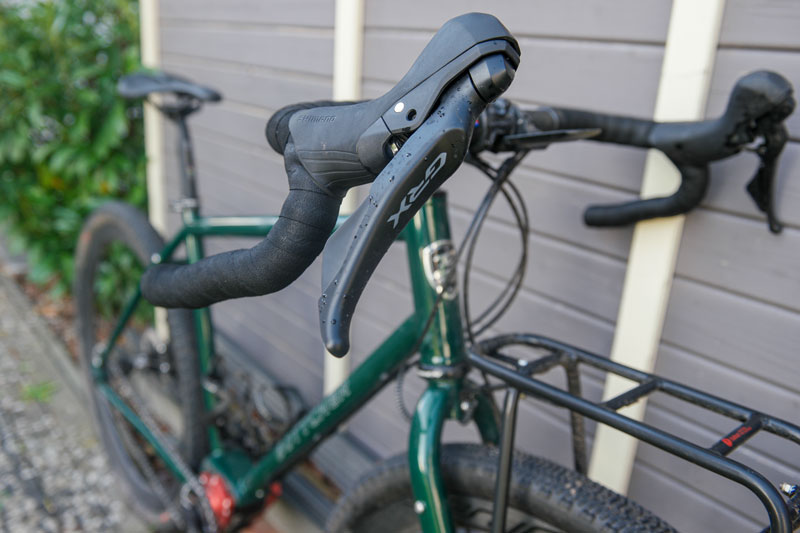
In practice, this is the finest and most pleasant way of shifting a Pinion that I know of. I already had the original shifter, which I find quite good. And I used the thumb levers, which were ok, but not always optimal. With the GRX, you shift up on the left, i.e. the heavier gear, and down on the right, into the lighter gears. This is very harmonious and works very well. The smaller levers in the GRX handle are then empty and you can play around with them if you get bored while riding.
And of course the question now arises as to when you will be able to order this innovation:
“The GRX/Pinion combination is already available from us and will now be shown in the configurator on the Böttcher homepage in a timely manner, as the demand for this version is increasing more and more, similar to the GRX/Rohloff combination, and a sensible solution and functionality is being sought. The configuration with a GRX/Pinion combination has a surcharge of approx. € 1000. However, this is also due to the fact that the brake system with STI levers, handlebars, handlebar tape etc. is considerably more expensive than the flat bar version.”
Böttcher
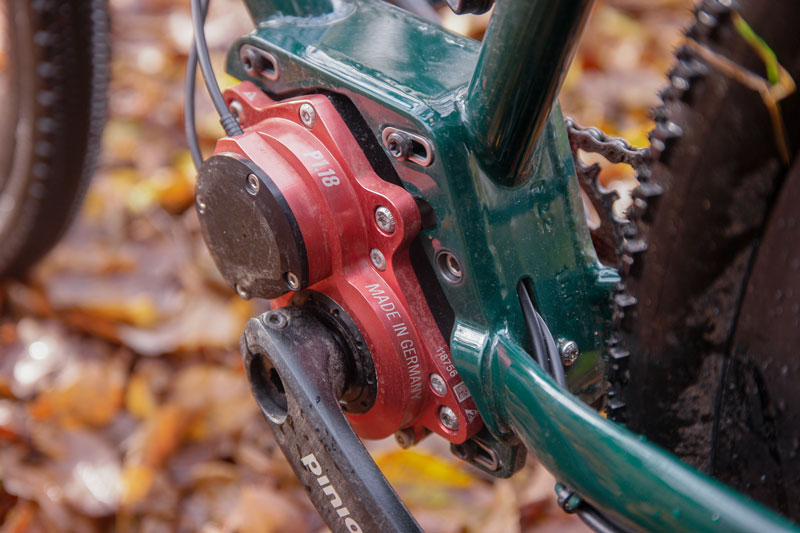
A P1.18 Pinion was fitted to the test bike. With its 18 gears, it has enough capacity to get up hills even when loaded. At least it was enough for me. It offers a total gear ratio of 636%, allowing you to pedal easily uphill and reach a decent speed on the flat.
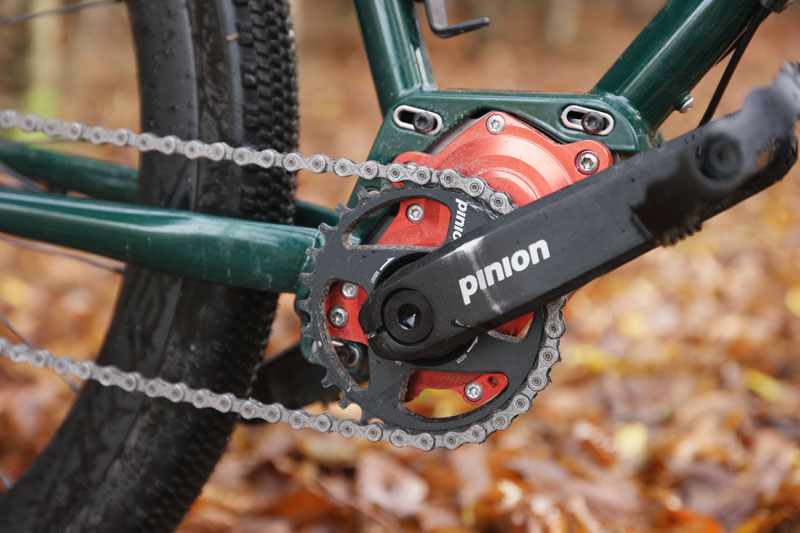
In combination with the chain, I found the power transmission and perceived efficiency to be better than with the belt. However, you have to re-tension the chain as it will stretch. But this is relatively easy to do with the Pinion box.
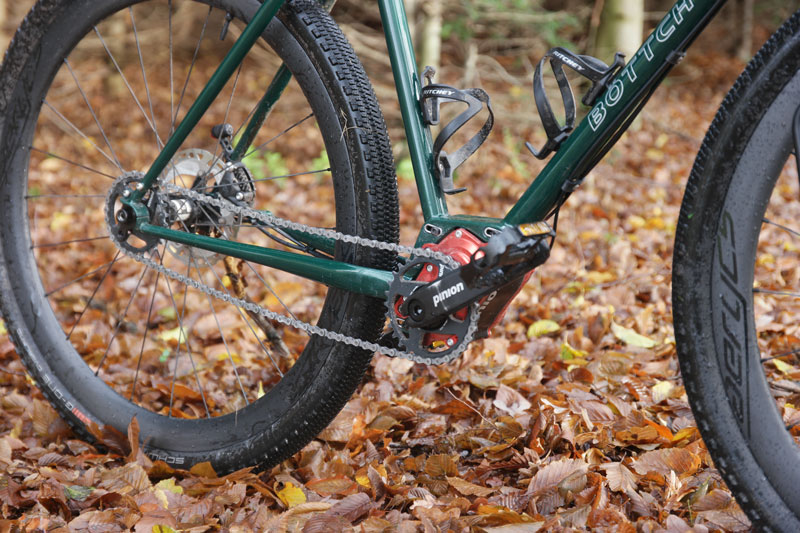
At 2,700g, the Pinion P1.18 is no lightweight. However, due to its positioning in the bottom bracket area, this is not really noticeable while riding. And interestingly, when I weighed the bike as a whole, I expected it to weigh more: the bike only weighs 15.15kg including pedals. That’s completely ok for a touring bike of this specification.
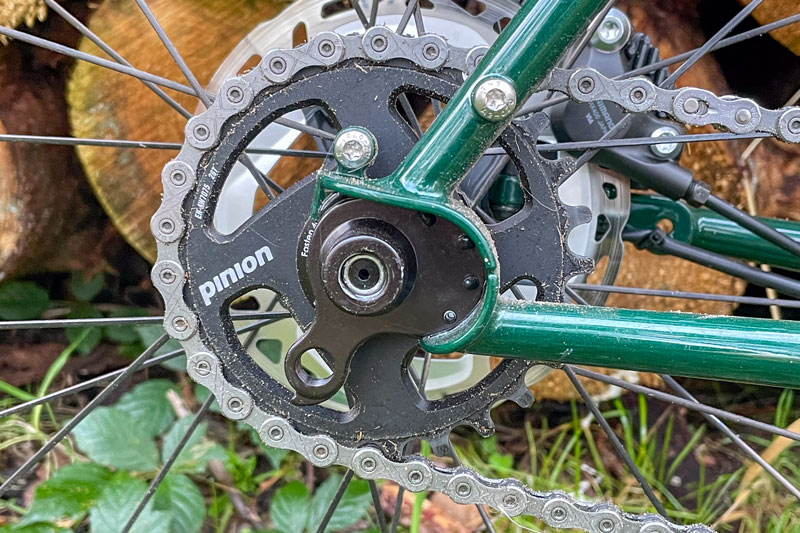
Wheels & pannier rack
For the wheels, Böttcher opted for the Aerycs GCX Terra 30 Carbon (28/29 inch). They look really nice and seem to be able to withstand a lot. I’ve already broken down a few aluminium and carbon rims and therefore have some experience with them. Of course, just under 400 kilometres are still too few to be able to give any real conclusions. Aerycs is a Hamburg-based company that Böttcher has been working with for a long time:
“Our wheels are assembled in the Hamburg area and shipped directly from there. If you would like to see our material for yourself, please drop by our workshop!”
Aerycs
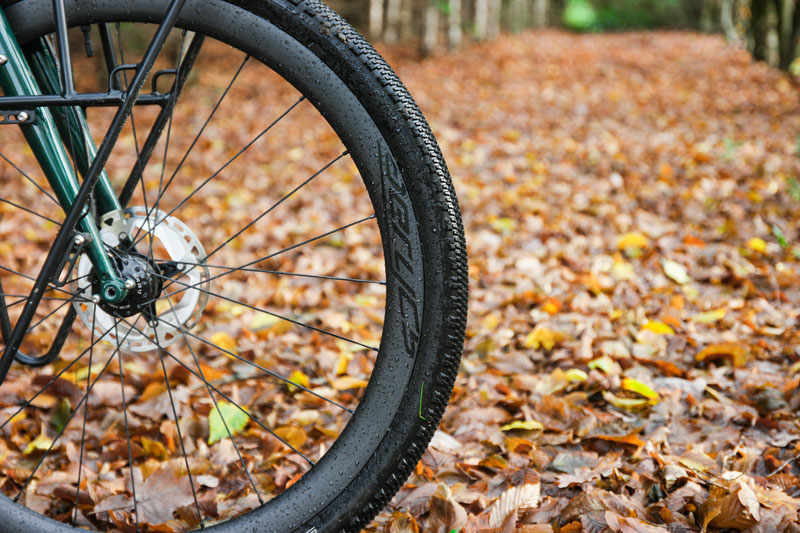
The GCX Terra 30 wheels have been specially developed for off-road use, with an inner rim width of 24 mm and a rim height of 30 mm. They are also available with 40 and 50 mm sidewall height.
“The GCX Terra rims have a reduced radial stiffness to better absorb bumps in the terrain and offer you maximum riding comfort.”
Aerycs
A SON28 hub dynamo is fitted at the front and a DT-Swiss 350 hub at the rear.
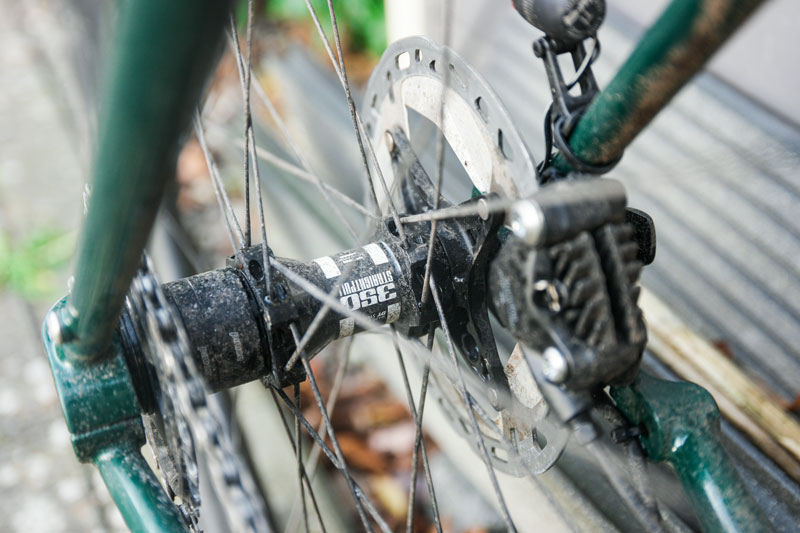
For the tyres, I suggested the Schwalbe G-One Overland (700cc). They are fitted to the bike in 45mm width and are great as expected. My clear recommendation for anyone looking for a puncture-proof tyre that runs well and is ideal for long tours on a variety of surfaces. I have already tested them on the Salsa Fargo (in 50mm width) and was impressed by their durability, puncture resistance and off-road performance.
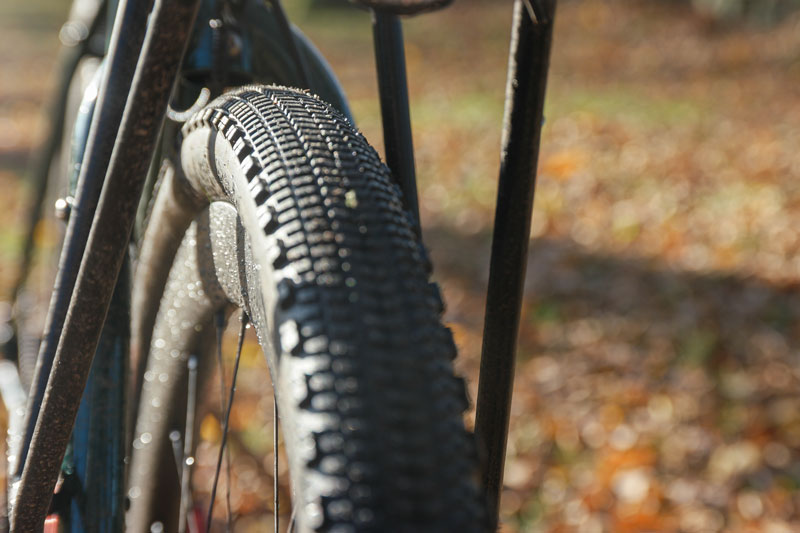
The Böttcher Evolution Pinion “Overlander” has the Tubus Grand Expedition Front rack as its trademark. This is part of the Böttcher configurator and I had wanted to have a look at it for a while anyway. It combines a front carrier with a LowRider. And with a weight of just under 800g, it is also the lightest carrier of this type for the front that I could find. What’s more, it absolutely matched my design idea of the Land Rover transferred to the bike.
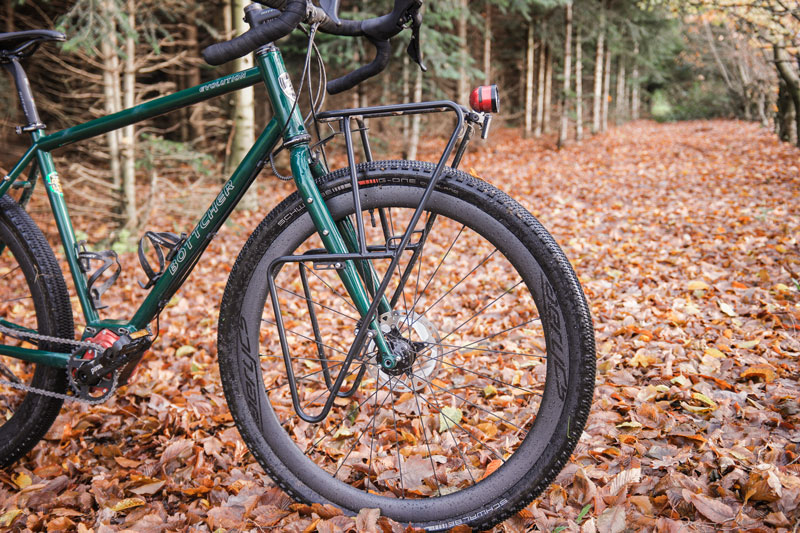
On my test ride, I had the Ortlieb Gravel-Pack on the front and a pannier with a water bottle on top. In my opinion, the Gravel-Pack is ideal for this because it’s not too big and has two hooks on the back to secure it, so it can’t wobble or swing open at all. They sit really firmly, even when things get a bit bumpy. And they are very easy to attach.
Of course, the bike rides differently when loaded and you have to allow for a little more sluggishness. But once you get used to it, it rolls well and tracks well. When packing, of course, you have to make sure that both sides are roughly equally loaded so that it doesn’t swing up. But you always have to bear this in mind when travelling with a touring bike and lowriders.
According to Tubus, the Grand Expedition Front can carry up to 18kg, which is more than enough. It is made of steel and is suitable for 26 and 28 inch bikes.
Light & handlebars
The SON Edelux light is mounted on the front of the tube. I also have this on my Norwid touring bike. It is very good and sufficient for normal use. I didn’t find it convincing off-road. Although it illuminates the path directly in front of the bike very well and sharply, it does not offer a larger field of light, which means that you only recognise pedestrians or animals very late, for example, and also see the route and obstacles correspondingly late.
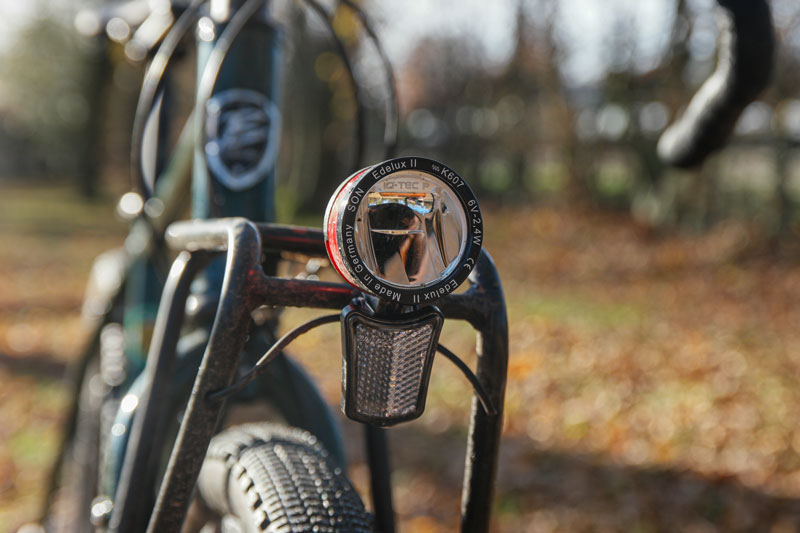
In the forest, I usually aim the light higher and can then recognise more, but then I also dazzle oncoming traffic at the same time. In essence: the Edelux is ok on the road and in the city. When it’s really dark – even on country roads – it has weaknesses in the light field. In my opinion, it is only suitable for off-road use to a limited extent. This is probably also due to the StVZO, which only permits such lamps.
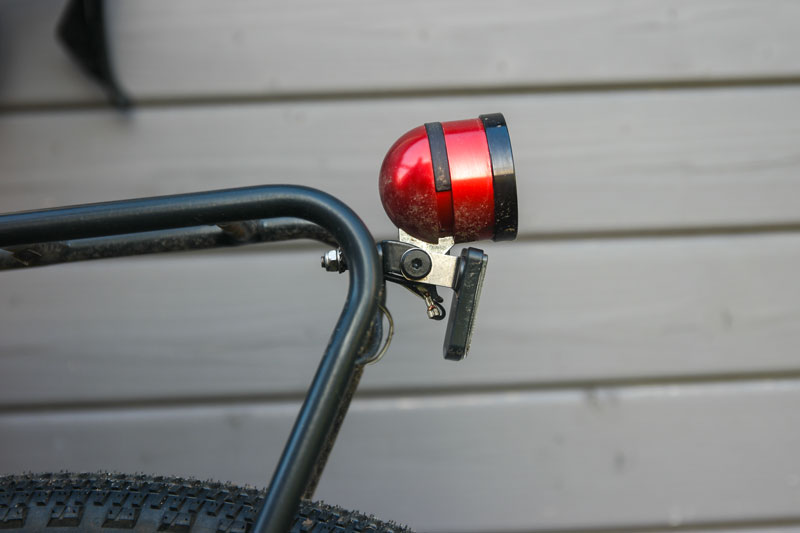
I’m also a bit spoilt by my Klite. However, Böttcher will soon be adding Supernova to its range and then you might be able to try out the M99 DY Pro, which is supposed to offer better and brighter light and is also more suitable for off-road use.
And it remains to be seen how the new SON Edelux USB-FL will perform and whether it can be an alternative. It doesn’t make sense to mount it on the front of the carrier, as you would then need a longer cable to be able to use the USB function. But the high beam function should also solve the problem of illumination.
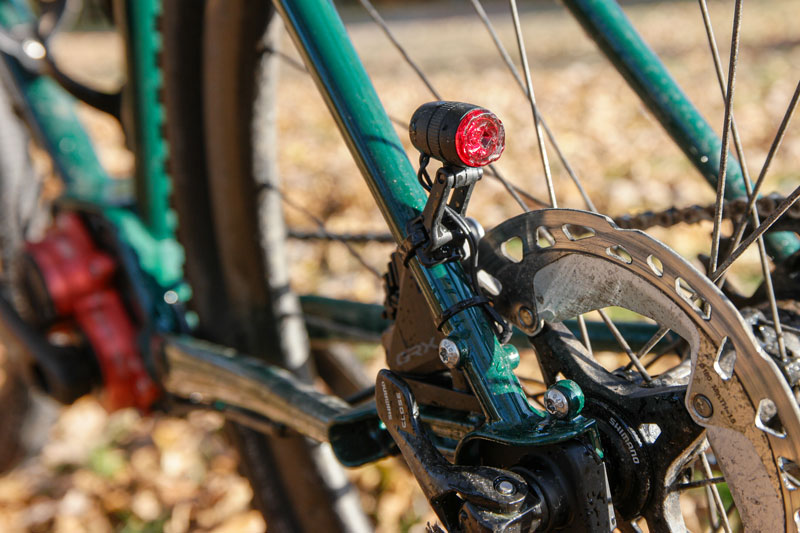
A B&M [my:] rear light was fitted at the back. I really like it because it is small and light and bright enough at the same time. The model is also available as a [my:E] version, which is designed for operation with DC voltage (on e-bikes). It can also be combined with the Supernova M99 DY Pro, for example.
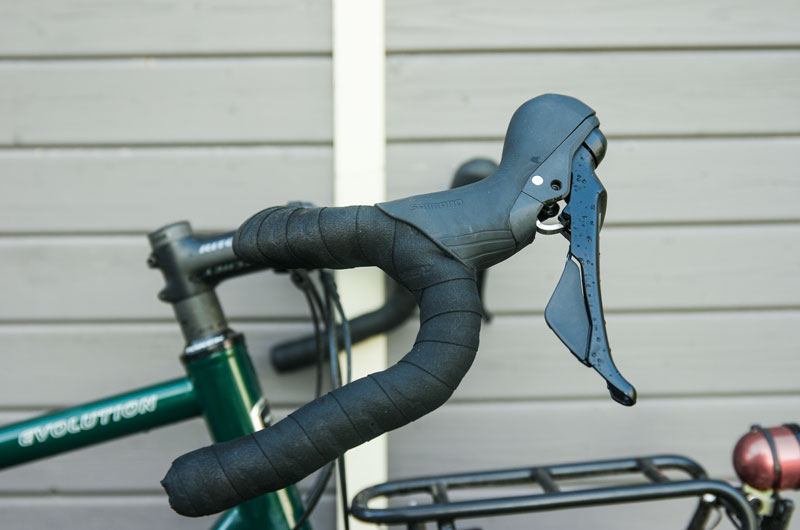
For the handlebars, Böttcher opted for the Ritchey WCS Carbon VentureMax. As expected, this is very comfortable to ride and offers good handling. The stem is also from Ritchey and some weight is also saved with the carbon spacers.
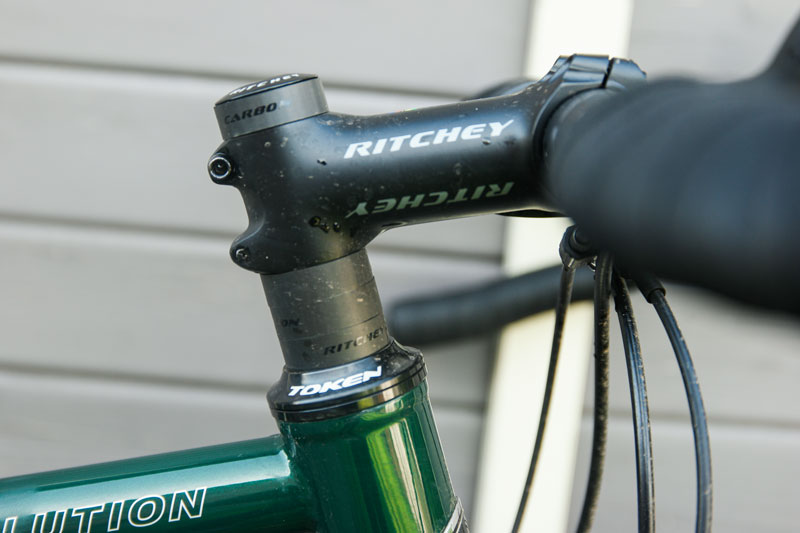
Conclusion
The Martin “Overlander” version of the Böttcher Evolution Pinion does not yet exist in this form. It is more or less a prototype that will certainly change a little in terms of its features.
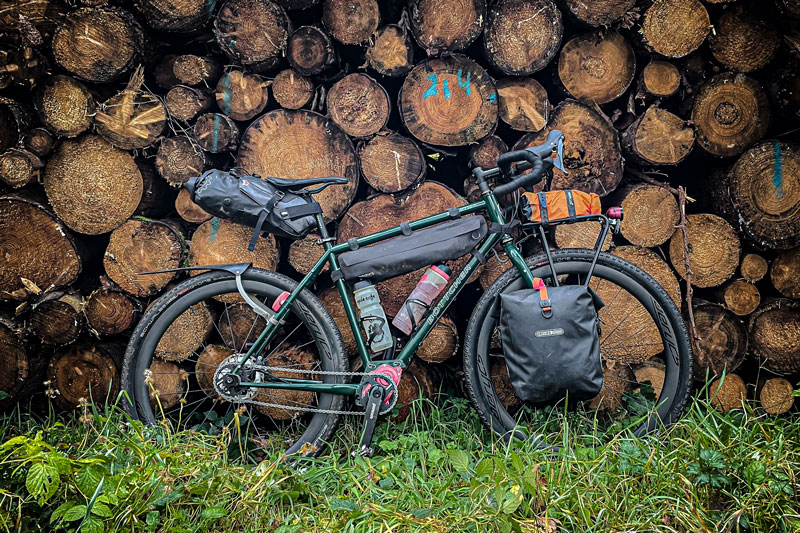
For example, a USB charger option will also be offered in the configurator:
“Sourcing USB chargers from suppliers is currently proving very difficult. This results in endless long delivery times. We are currently looking into adding the CINQ Plug6 Plus version.”
Böttcher
The price has also not yet been finalised. But I assume that Böttcher will provide information on this soon and then you can configure your own Overlander.
The weight of the test bike was 15.15 kg including pedals. That’s actually ok when you consider that the P 1.18 gears alone weigh more than two kilograms.
So if you’re looking for a touring bike with Pinion gears and a drop bar, the Böttcher Evolution Pinion in the “Martin Overlander” version is worth a look. However, you’ll have to bring some money with you, as the technologies and components used cost a little.
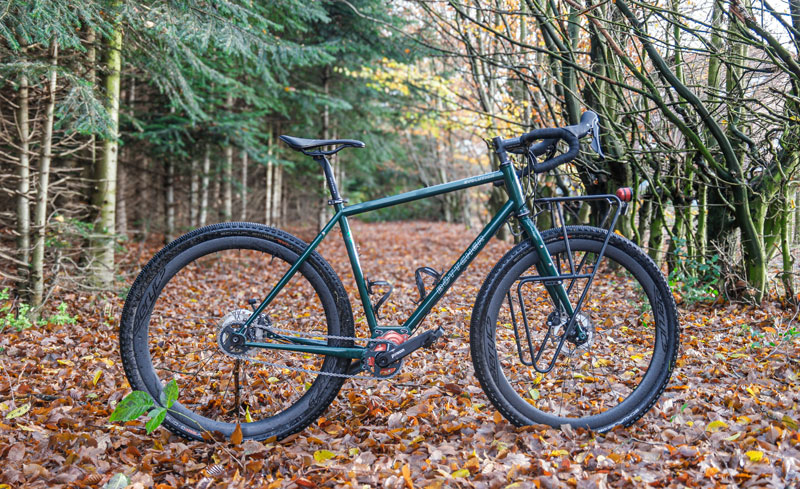
In return, you get a steel-frame touring bike that combines the best features of a reliable touring bike with those of a sporty gravel bike. In principle, a modern randonneur for long tours through forests, on tarmac and gravel.
And the world first “PinShim” is also available and offers considerable shifting comfort with the Shimano GRX on the drop bar and in conjunction with the hydraulic disc brakes.
So, if you like or are interested in the concept, get in touch with Böttcher and get talking.
